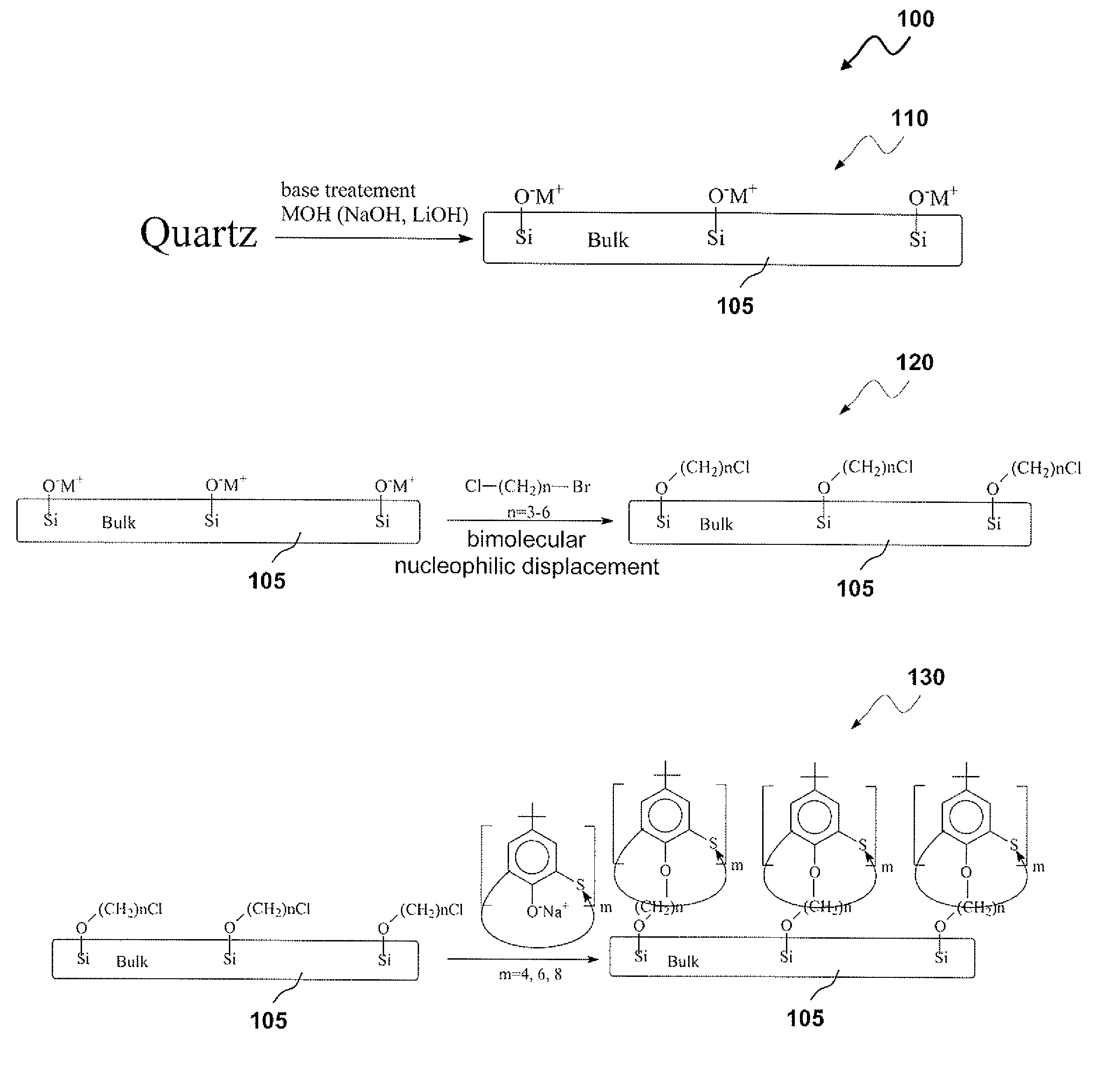Methods for use of a sensitive layer for hydrogen sulphide detection with saw/baw devices
a technology of hydrogen sulphide and sensitive layer, which is applied in the direction of chemical methods analysis, instruments, coatings, etc., can solve the problems of affecting the detection accuracy of h2s, so as to improve the population of oh groups, improve the detection accuracy, and improve the detection accuracy
- Summary
- Abstract
- Description
- Claims
- Application Information
AI Technical Summary
Benefits of technology
Problems solved by technology
Method used
Image
Examples
Embodiment Construction
[0021]The particular values and configurations discussed in these non-limiting examples can be varied and are cited merely to illustrate at least one embodiment and are not intended to limit the scope thereof.
[0022]The present embodiment utilizes four approaches to perform immobilization of sensing monolayers 516 onto the surface of a piezoelectric quartz substrate 105, as shown in FIG. 5, to provide a sensor adapted for hydrogen sulphide SAW / BAW detection. The approaches can be based on immobilization of thiacalix[n]arenes through the intermediate of a spacer in the piezoelectric quartz substrate 105, immobilization of mercapto halides, immobilization of mercapto alcohols, and immobilization of chloromethylated thiacaliz[n]arenes. FIGS. 1-4 can respectively describe each immobilization approach in greater detail.
[0023]Referring to FIG. 1, a schematic diagram of a process 100 for on-chip immobilization of p-tert-butylthiacalix[n]arenes at the surface of a piezoelectric quartz substr...
PUM
| Property | Measurement | Unit |
|---|---|---|
| temperatures | aaaaa | aaaaa |
| temperature | aaaaa | aaaaa |
| piezoelectric | aaaaa | aaaaa |
Abstract
Description
Claims
Application Information
 Login to View More
Login to View More - R&D
- Intellectual Property
- Life Sciences
- Materials
- Tech Scout
- Unparalleled Data Quality
- Higher Quality Content
- 60% Fewer Hallucinations
Browse by: Latest US Patents, China's latest patents, Technical Efficacy Thesaurus, Application Domain, Technology Topic, Popular Technical Reports.
© 2025 PatSnap. All rights reserved.Legal|Privacy policy|Modern Slavery Act Transparency Statement|Sitemap|About US| Contact US: help@patsnap.com



